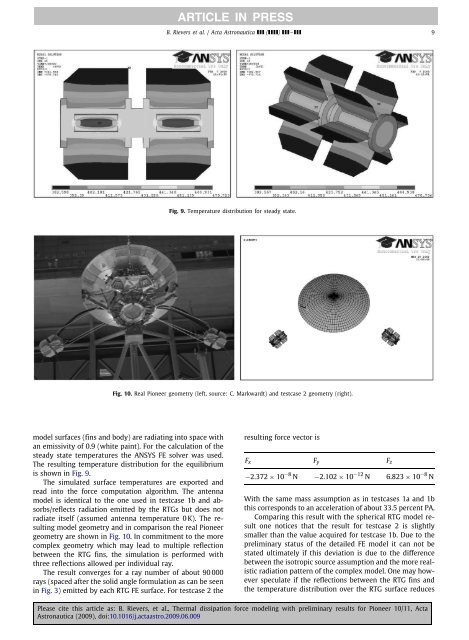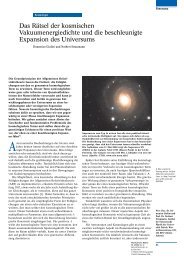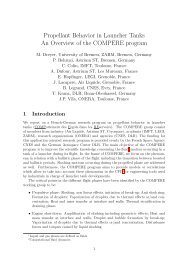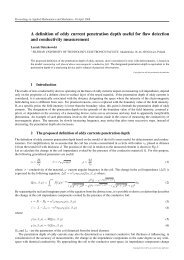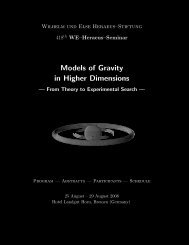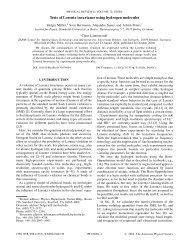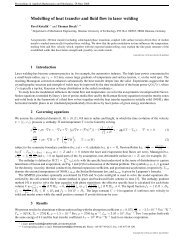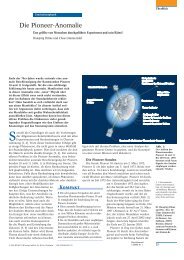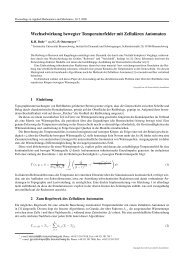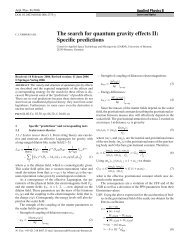Thermal dissipation force modeling with preliminary results ... - ZARM
Thermal dissipation force modeling with preliminary results ... - ZARM
Thermal dissipation force modeling with preliminary results ... - ZARM
You also want an ePaper? Increase the reach of your titles
YUMPU automatically turns print PDFs into web optimized ePapers that Google loves.
ARTICLE IN PRESSB. Rievers et al. / Acta Astronautica ( ) – 9Fig. 9. Temperature distribution for steady state.Fig. 10. Real Pioneer geometry (left, source: C. Markwardt) and testcase 2 geometry (right).model surfaces (fins and body) are radiating into space <strong>with</strong>an emissivity of 0.9 (white paint). For the calculation of thesteady state temperatures the ANSYS FE solver was used.The resulting temperature distribution for the equilibriumis shown in Fig. 9.The simulated surface temperatures are exported andread into the <strong>force</strong> computation algorithm. The antennamodel is identical to the one used in testcase 1b and absorbs/reflectsradiation emitted by the RTGs but does notradiate itself (assumed antenna temperature 0 K). The resultingmodel geometry and in comparison the real Pioneergeometry are shown in Fig. 10. In commitment to the morecomplex geometry which may lead to multiple reflectionbetween the RTG fins, the simulation is performed <strong>with</strong>three reflections allowed per individual ray.The result converges for a ray number of about 90 000rays (spaced after the solid angle formulation as can be seenin Fig. 3) emitted by each RTG FE surface. For testcase 2 theresulting <strong>force</strong> vector isF x F y F z−2.372 × 10 −8 N −2.102 × 10 −12 N 6.823 × 10 −8 NWith the same mass assumption as in testcases 1a and 1bthis corresponds to an acceleration of about 33.5 percent PA.Comparing this result <strong>with</strong> the spherical RTG model resultone notices that the result for testcase 2 is slightlysmaller than the value acquired for testcase 1b. Due to the<strong>preliminary</strong> status of the detailed FE model it can not bestated ultimately if this deviation is due to the differencebetween the isotropic source assumption and the more realisticradiation pattern of the complex model. One may howeverspeculate if the reflections between the RTG fins andthe temperature distribution over the RTG surface reducesPlease cite this article as: B. Rievers, et al., <strong>Thermal</strong> <strong>dissipation</strong> <strong>force</strong> <strong>modeling</strong> <strong>with</strong> <strong>preliminary</strong> <strong>results</strong> for Pioneer 10/11, ActaAstronautica (2009), doi:10.1016/j.actaastro.2009.06.009


